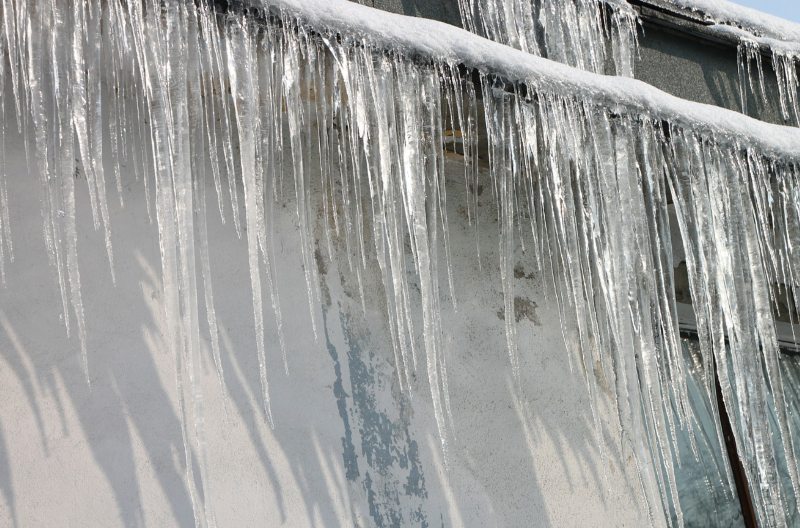Winter is well on its way, and while a little cold doesn’t scare us, it does have special considerations for your home. You want to have a warm place to cozy up, so protecting your property is of huge importance. Ice dams can result in major damages and hassle for you if you don’t take the proper precautionary methods ahead of time. FloodSERV is sharing some tips on how to prevent ice dams and protect your home from water damage and any corresponding mold.
What is an Ice Dam?
An ice dam forms at the edge of a roof, causing snow to back up behind the dam. This blockage can cause leaks into your home.
How Does an Ice Dam Form?
Generally, there are two common ways that ice dams are caused.
- As heat flows from the attic, the roof warms. This melts the snow at the roofline, creating a build up of ice in the gutters as the temperatures fall.
- Sunlight warms the snow on the roof. As it sets, the melted snow re-freezes in a ridge along the edge of the roof. Any snow that melts after cannot exit through the gutters, which means the water backs up behind the dam and into your home.
Can Ice Dams Cause Mold to Grow?
The short answer is yes. If too much moisture accumulates, a leak will occur in the attic. Mold only requires a food source, moisture, and a suitable environmental temperature to sprout. Once it has taken hold, mold quickly spreads, causing significant damage to the attic and surrounding areas, in addition to threatening the health of your home’s occupants.
While the attic may seem like a cold space, especially in winter, everyday activities emit heat that escapes through the attic. Everything from showering to cooking, washing dishes, and running the laundry raise the temperature if your attic isn’t properly insulated.
Heat and condensation can also occur in the attic if the property lacks adequate ventilation. Steam from cooking or showering travels upwards, heating the attic through the air vents.
How to Prevent Ice Dams
While ice dams cause major issues, they are preventable. The easiest thing to do is to inspect your insulation and ventilation before the cold weather hits. Make adjustments as needed. Other steps you can take include:
- Enlist the help of a professional roofing contractor for an inspection.
- Clear gutters of debris.
- Insulate duct work in the attic.
- Seal warm air leaks.
How to Spot Attic Water Damage
If you haven’t yet made it up to your gutters and roof this season, why not try starting in the attic? Condensation may present itself, lending you to make the discovery and needed repairs. Watch out for the following signs of attic water damage.
- Visible mold growth.
- Gaps between lights and the ceiling.
- Cracks in the drywall.
- Stains and discoloration on ceilings, walls, floors, etc.
- High relative humidity.
- Musty smells and odors.
Ice Dams Don’t Have to Destroy Your Home
Ice dams are preventable, but that doesn’t mean that these measures are the end all be all. FloodSERV understands that sometimes the unthinkable happens. If you notice any of the signs of water damage in your attic, call us today. We offer professional water restoration and mold remediation to help you.

